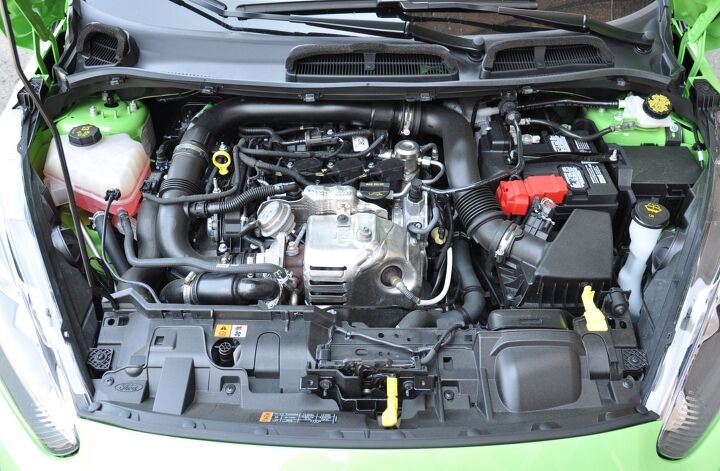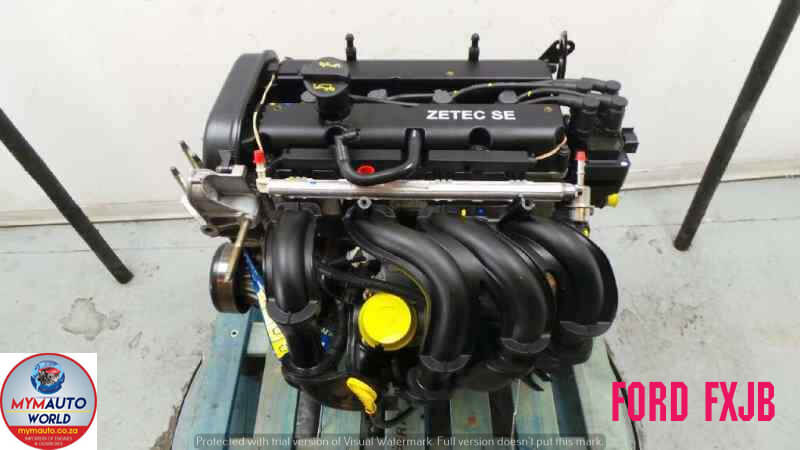How a Ford Fiesta Engine Tune-Up Can Improve Your Car’s Performance
How a Ford Fiesta Engine Tune-Up Can Improve Your Car’s Performance
Blog Article
Checking Out the Evolution of Engines: From Classic Styles to Modern Marvels
From the initial vapor engines that powered the Industrial Revolution to the introduction of interior burning engines that changed flexibility, each phase has added to higher performance and capacity. As we examine these landmarks, one must consider how the future of engine style may unravel, challenging our assumptions of power and effectiveness.
The Birth of Engine Technology
The introduction of engine modern technology marked a zero hour in human development, transforming energy conversion and transportation. The earliest engines emerged from the demand to harness mechanical power for sensible usage, bring about the advancement of gadgets that converted numerous power types right into motion. The principle of the engine can be traced back to old civilizations, where simple devices, such as the waterwheel and windmill, used all-natural pressures to do job. However, it was throughout the late 17th and very early 18th centuries that substantial improvements began to emerge.
The development of the inner burning engine and the innovation of the steam engine catalyzed an extensive shift in industrial capacities. These engines not only enhanced performance but additionally increased the extent of human movement, enabling extraordinary transport opportunities. The very early models laid the foundation for the mechanical world, promoting the surge of industries and reshaping social frameworks.
As engine designs developed, they integrated innovative materials and advanced engineering concepts, leading the way for modern-day developments - ford fiesta engine. The birth of engine modern technology fired up a relentless quest of performance and power, setting the phase for the dynamic advancement of transportation and commercial equipment that would follow
Steam Engines and Their Effect

The heavy steam engine's effect was especially apparent in the transportation field (ford fiesta engine). Steam-powered locomotives assisted in the fast movement of products and individuals throughout large distances, properly shrinking the geographical obstacles that had actually previously impeded profession and communication. In a similar way, steamships transformed naval travel, enabling quicker and a lot more dependable crossings of rivers and oceans.
In industry, steam engines powered factories, allowing mass production and the increase of urban facilities as centers of financial task. Steam technology fostered developments in engineering and production procedures, laying the foundation for future improvements in engine layout.
The Rise of Inner Combustion
Often outweighing vapor power, the surge of internal burning engines marked a transformative change in transportation and market throughout the late 19th and very early 20th centuries. The growth of these engines, characterized by their capability to shed fuel within the engine itself, made it possible for better performance and power contrasted to conventional vapor engines. Introducing creators such as Nikolaus Otto and Rudolf Diesel played crucial functions in improving engine styles, bring about prevalent adoption in autos, boats, and industrial machinery.
The interior burning engine's compact size and fairly light-weight nature facilitated the introduction of individual lorries, changing individual mobility and improving city landscapes. By enabling faster traveling and the effective transportation of goods, these engines militarized financial development and cultivated globalization. The adaptability of gas options, including fuel and diesel, even more enhanced their allure, permitting diverse applications throughout numerous markets.
Regardless of the environmental worries that would certainly later on occur, the initial allure of interior burning modern technology stocked its transformative potential. As society accepted this advancement, the foundation was laid for modern-day transport systems, developing interior combustion engines as a cornerstone of commercial innovation and life throughout the 20th century.
Developments in Engine Efficiency
As inner combustion engines came to be integral to transportation and sector, the focus shifted in the direction of enhancing their effectiveness to fulfill expanding demands for efficiency and sustainability. Innovations in engine style, material science, and innovation have actually considerably added to this advancement.
One major advancement is the growth of turbocharging, which allows for raised air consumption, leading to more complete gas burning and enhanced power output without enlarging engine size. Furthermore, variable valve timing systems have been implemented to enhance engine efficiency throughout different RPM arrays, thereby enhancing gas effectiveness.
The use of innovative fuel injection technologies, such as direct injection, has likewise played a critical function. This approach enables even more exact control over the fuel-air blend, promoting better burning and minimizing discharges. Moreover, light-weight materials, consisting of light weight aluminum and composite parts, have been taken on to decrease overall engine weight, bring about enhanced performance.
These developments show a broader fad within go to these guys the vehicle sector, where the harmony in between engineering innovation and ecological considerations drives the recurring pursuit for greater efficiency in internal burning engines. As a result, contemporary engines are now extra effective, cleaner, and reliable than in the past, leading the way for a more lasting future in transport.
The Change to Electric Power
With expanding problems over environmental effect and nonrenewable fuel source dependency, the automotive industry is experiencing a considerable change in the direction of electrical power. This shift is driven by a mix of technological advancements, regulative stress, and changing customer choices. Electric vehicles (EVs) supply a compelling alternative to conventional interior burning engines, boasting lowered greenhouse gas exhausts and reduced web link operating costs.
The rise of battery modern technology has been a game changer, with lithium-ion batteries ending up being much more effective and affordable. Enhanced energy thickness and faster charging abilities have made EVs extra functional for everyday usage. Additionally, governments worldwide are applying incentives and establishing enthusiastic targets for phasing out fossil gas vehicles, thus accelerating the fostering of electrical power.
Major car manufacturers are spending heavily in research and growth, bring about the introduction of a varied variety of electrical models. This consists of not only passenger autos but likewise commercial automobiles and public transport remedies. As charging infrastructure expands and battery innovation remains to boost, the shift to electric power is poised to improve the auto landscape, advertising sustainability and development in the years to come. The future of transport is electrical, and the energy is obvious.
Verdict
The advancement of engine innovation represents a substantial trajectory of technology that has greatly influenced transport and sector. From the foundational vapor engines to the transformative internal burning engines, each growth has contributed to enhanced flexibility and economic growth. The existing shift towards electrical power emphasizes a crucial dedication to sustainability, driven by improvements in battery innovation. This ongoing advancement not just shows altering social needs but also highlights the possibility for Recommended Reading a cleaner and a lot more reliable future in engine layout.

Report this page